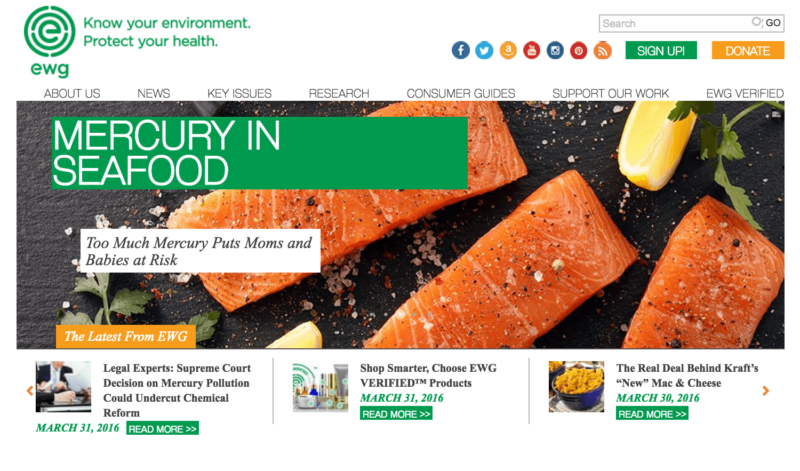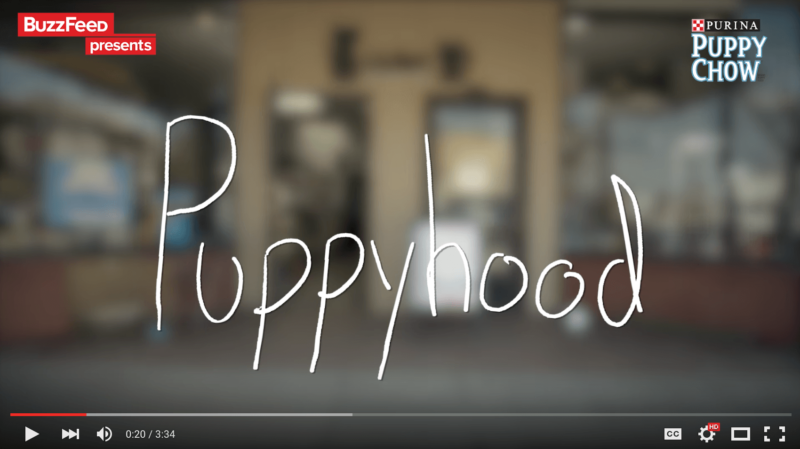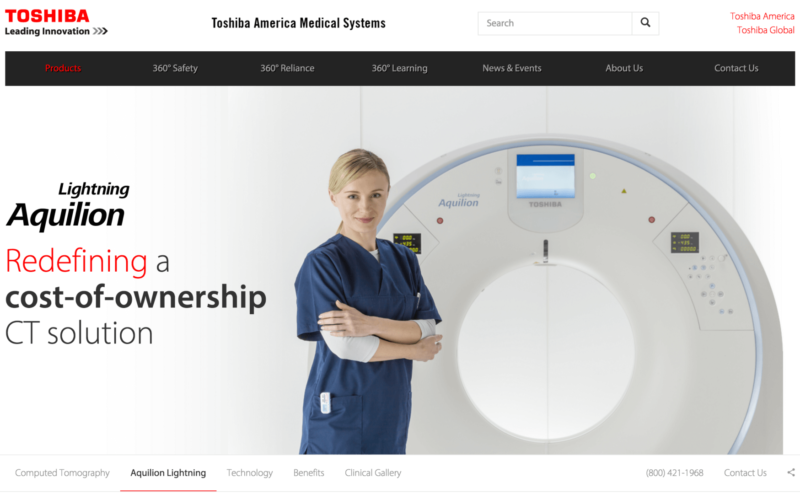3 big brands that totally “get” content marketing
Looking for content marketing ideas and inspiration? Contributor Quinn Whissen describes three impressive efforts well worth emulating.
It’s been proven time and time again that content marketing works. Numerous case studies floating around the interwebs show its efficacy for small and medium-sized businesses.
But how about some larger brands? Is it prohibitively difficult to put together a comprehensive content strategy with so many moving parts, global markets and countless decision-makers?
Not at all. Large brands have successfully adopted content marketing and done it at a scale that works for their business model. Here are three brands — one large non-profit, one B2C company and one global B2B organization — that all prove that big organizations can do it, too… and also offer us all a little inspiration.
Environmental Working Group
Environmental Working Group is a DC-based non-profit, non-partisan organization dedicated to environmental research. Their mission is to “empower you to get to know your environment and protect your health.”
That statement seems to double nicely as an editorial mission statement for the great use of content marketing that I’ve experienced navigating through the robust EWG site.
Breaking down the complex
Environmental research could be a dense, boring topic to many people, but EWG breaks its research down into a multitude of content formats that appeal to a range of levels of understanding. Formats I came across include:
- video;
- press releases;
- consumer guides;
- research studies;
- mobile apps; and
- blog articles.
Just as an example, the content piece, “Mercury in Seafood,” employs multiple ways to simplify an important, yet perhaps dry topic for an everyday reader. EWG explains the issue through statistics, a video full of recommendations, a full executive summary of the research, a calculator, guidelines, a printable card for your wallet and FAQs. That’s a great example of content repurposing in action with a clear intention of being helpful.
Enormously useful resources
EWG’s site contains robust areas dedicated to “guides,” covering topics from cosmetics to pesticides in produce, and more. I could go on for paragraphs about what and how it’s done, but you should see it for yourself.
The organization has fleshed out robust resource sections of its website, which are almost micro-sites in their own right. These guides could easily become anyone’s go-to informational source for topics as general as sunscreen to something as niche as a “Meat Eater’s Guide to Climate Change + Health.”
Some content is free and public, while some is gated, serving the two purposes of providing relevant, useful content to the audience and also building the non-profit’s list.
A whole content marketing system
Around every corner and click of the mouse are chances to engage further: email opt-ins, donation prompts, calls to action and relevant internal links. One thing is for certain on the EWG site: they don’t want you to leave without engaging in some way.
The real kicker is that doesn’t make me — or I’d assume any other visitor — any less willing to give away my contact info. I found the content so useful that by the time I finished putting together this write-up, I had signed up for one downloadable guide, put my name on a petition and thought about making a small donation. Guess their content marketing worked on me!
Lessons to learn from EWG
- Non-profits can do content marketing, too, and do it well, in line with their core mission.
- A variety of media formats for dense topics can help break down barriers of understanding.
- Robust resource sections are useful for lead generation and encourage people to provide personal information to build a list.
- Don’t forget to create a journey beyond just providing content. What do you want your audience to do next? How can you test to get more conversions?
Puppyhood/Purina
With 10 million views and counting, it’s safe to say “Puppyhood” has gone viral. It’s a short little video that shares the story of a young man who buys a (darling) puppy and gets to know her. The video is far too cute for its own good, and it’s not hard to see why it’s racked up eight digits’ worth of YouTube views.
As you’re watching, you may not even realize the video is an advertisement (I’m using that word loosely) for Purina Puppy Chow.
Only at the end, when you see the logo, will that fact become clear. Regardless, the video is a great piece of storytelling with subtle branding.
Storytelling turns into content marketing
What propels this video beyond just darn-good brand storytelling to effective content marketing, is the micro-site that comes along with it: http://puppyhood.com. This is a thorough snapshot of everything you would need to know as a new puppy owner, with wide ranging content, like:
- interactive tools like a breed selector and name generator;
- training tip articles;
- trending list-style stories; and
- a series of YouTube videos in partnership with BuzzFeed.
For those who are thinking about getting a puppy or are in the throes of puppyhood already, this is clearly a great resource that will help answer any questions that come up.
The audience comes first
One of the most notable things about Puppyhood is that the Purina brand really takes a back seat to the content. All I could find was the logo up top (which is small), a tiny link about the brand in the footer and a coupon you can get by registering. In the grand scheme of everything on the site, that’s not significant.
What Purina knows is that content marketing is about being helpful, first and foremost. Yes, Purina’s end goal is to move more dog food product, but the means to that end is not by selling, it’s by helping.
With topics covering grooming to exercise, health to behavior, Puppyhood.com is THE resource anyone would need as a new dog owner. And who would that dog owner feel more loyal to when it comes time to choosing their dog food? You guessed it: Purina. The jury’s out on whether the results prove this, but content marketing is about playing the long game, not the short game.
Lessons to learn from Purina:
- Storytelling can be an effective initial way to capture and captivate your audience.
- Partnering with influencers can amplify your content promotion and reach new people.
- Content marketing isn’t about “me, me, me.” Your audience comes first. What would they find helpful?
- Create a relationship based on trust and loyalty so when the time comes for someone to make a purchasing decision, you are top of mind.
Toshiba
Toshiba is a huge worldwide B2B company, and Toshiba America Medical Systems is a global supplier of medical imaging equipment. So they have some serious big-ticket items that they showcase on their website with flying content marketing colors.
Product pages that inform
Toshiba’s product pages don’t just try to sell the product; they inform, educate and entertain. The content includes:
- in-depth informational brochures;
- video demos;
- galleries of imaging results (in animated GIFs);
- customer testimonials;
- technology breakdowns; and
- detailed diagrams.
It’s very clear that Toshiba values informing its audience just as much as it does selling to them.
A dedication to education
I got even more excited as I looked through Toshiba’s website when I saw the Learning Center with a clear mission: “More than simple equipment training, we provide you with the tools to be successful in your practice.” That’s content marketing right there. Toshiba doesn’t just want to sell products; it wants to help customers be the most successful they can be.
Even outside of the e-courses, Toshiba offers a wealth of free resources in its Learning Center, namely in its Healthcare Economics section, which touches on changes with the Affordable Care Act.
The topic may at first seem odd for a medical diagnostic imaging hardware organization, but it’s not odd within the paradigm of content marketing. In this case, Toshiba offers useful information to its audience that is vital to their lives, even if it may be peripheral to their main business, as explained in this AdAge article:
“… [T]he economics of health-care reform are influencing customers’ decisions, especially as they potentially deal with millions more patients and replace equipment less often due to financial pressures. ‘They’re utilizing their technologies longer than they ever have before,’ said Ms. Gillen. Toshiba isn’t using Mr. Szostak’s work to influence purchase decisions outright, but rather to educate customers in the near term and benefit Toshiba over time.”
Toshiba has a clear focus on education throughout their website, and they are a great example of a big brand putting their customers first.
Lessons to learn from Toshiba:
- Don’t forget about the content opportunities to be found on your product pages. Use mixed media formats to provide different ways for people to consume content.
- How can you help your audience be more successful in what they do? See if you can adjust your core mission for your marketing to something other than just moving the needle.
- Gathering resources into an educational resource section of your website can build trust and loyalty.
Do you know of other companies that we can look to for content marketing inspiration?
Opinions expressed in this article are those of the guest author and not necessarily MarTech. Staff authors are listed here.
Related stories








